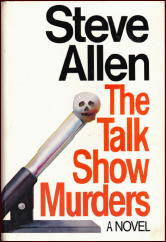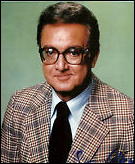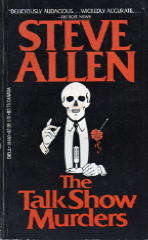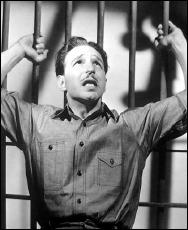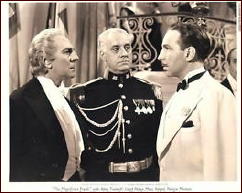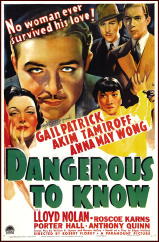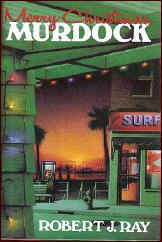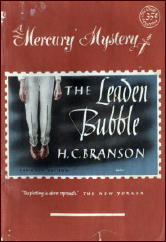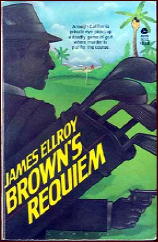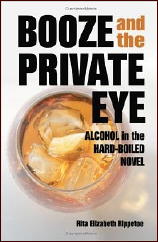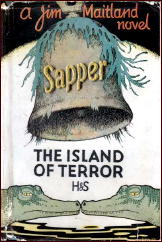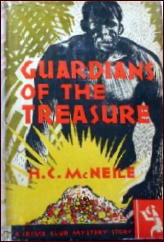Sat 2 Nov 2013
DEATH NOTED: Gérard de Villiers (1929-2013).
Posted by Steve under Authors , Bibliographies, Lists & Checklists , Crime Fiction IV , Obituaries / Deaths Noted[4] Comments
From The Telegraph (UK):
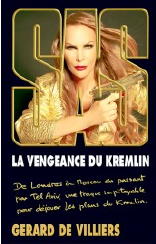
“Intelligence chiefs called him the best-informed spy novelist on the planet for predicting real-life James Bond-style hits before they happened.
“He sold up to 150 million copies of his 200-tome SAS pulp-fiction series, in which hero Malko Linge, an Austrian aristocrat, carries out freelance spy operations around the world for the CIA to pay for the upkeep of his castle.
“But Gérard de Villiers died on Thursday [October 31] aged 83 still nursing two regrets: his lack of recognition in his home country and failure to have his books turned into Hollywood blockbusters to rival the Bond films.
“France’s literary establishment were appalled at the author’s hard-Right views and turned their noses up at his lurid tomes, with their trademark gun-toting femmes fatales, cardboard characters and obligatory sex scenes.
“But his geopolitical insights, based on information gleaned from his vast network of intelligence officials, diplomats and journalists, were often eerily prescient….”
It has proven difficult to find a complete list of de Villiers’ work online, but on the Spy Guys and Gals website I have found the following, which if the article above is correct, is almost complete:
List Of French Titles
Nr French Title (Translation) – Year Published In France
1 Sas à Istanbul (Sas In Istanbul) – 1965
2 Sas Contre Cia (Sas Against Cia) – 1965
3 Operation Apocalypse (Operation Apocalypse) – 1965
4 Samba Pour Sas (Samba For Sas) – 1966
5 Rendez-Vous à San Francisco (Go To San Francisco) – 1966
6 Le Dossier Kennedy (The Kennedy File) – 1967
7 Broie Du Noir (Broods) – 1967
8 Sas Aux CaraïBes (Sas In The Caribbean) – 1967
9 Sas à L’Ouest De Jeruzalem (Sas West Of Jeruzalem) – 1968
10 L’Or De La RivièRe Kwaï (Gold On The River Kwai) – 1968
11 Magie Noire à New York (Black Magic In New York) – 1968
12 Les Trois Veuves De Hong Kong (The Three Widows Of Hong Kong) – 1968
13 L’Abominable Sirene (The Ugly Mermaid) – 1969
14 Les Pendus De Bagdad (The Hanged In Baghdad) – 1969
15 La PanthèRe D’ Hollywood (The Panther Of Hollywood) – 1969
16 Escale à Pago-Pago (Stopover In Pago Pago) – 1969
17 Amok à Bali (Amok In Bali) – 1970
18 Que Viva Guevara (Que Viva Guevara) – 1970
19 Cyclone à Onu (Cyclone To Un) – 1970
20 Mission à Saigon (Mission In Saigon) – 1970
21 Le Bal De La Comtesse Adler (The Ball Of The Countess Adler) – 1971
22 Les Parias De Ceylon (The Pariahs Of Ceylon) – 1971
23 Massacre à Amman (Massacre In Amman) – 1971
24 Requiem Pour Tontons Macoutes (Requiem For Tonton Macoutes) – 1971
25 L’Homme De Kabul (The Man From Kabul) – 1972
26 Mort à Beyrouth (Death In Beirut) – 1972
27 Safari à La Paz (Safari In La Paz) – 1972
28 L’HéRoïNe De Vientiane (The Heroine Of Vientiane) – 1972
29 Berlin, Check-Point Charlie (Berlin, Check-Point Charlie) – 1973
30 Mourir Pour Zanzibar (Dying For Zanzibar) – 1973
31 L’Ange De Montevideo (The Angel Of Montevideo) – 1973
32 Murder Inc., Las Vegas (Murder Inc., Las Vegas) – 1973
33 Rendez-Vous à Boris Gleb (Visit Boris Gleb) – 1974
34 Kill Henry Kissinger (Kill Henry Kissinger) – 1974
35 Roulette Cambodgienne (Roulette Cambodian) – 1974
36 Furie à Belfast (Fury In Belfast) – 1974
37 Gu̻Pier En Angola (Bee In Angola) Р1975
38 Les Otages De Tokio (The Hostages Of Tokio) – 1975
39 L’Orde Regne A Santiago (The Orde Reign In Santiago) – 1975
40 Les Sorciers Du Tage (Wizards Of The Tagus) – 1975
41 Embargo (Embargo) – 1976
42 Le Disparu De Singapore (The Disappeared From Singapore) – 1976
43 Compte à Rebours En Rhodesie (Countdown In Rhodesia) – 1976
44 Meurtre à AthèNes (Murder In Athens) – 1976
45 Le Tr̩Sor Du N̩Gus (The Treasure Of The Negus) Р1977
46 Protection Pour Teddy Bear (Protection For Teddy Bear) – 1977
47 Mission Impossible En Somalie (Impossible Mission In Somalia) – 1977
48 Marathon à Spanish Harlem (Marathon Adverse Harlem) – 1977
49 Nauffrage Aux Seychelles (Nauffrage In Seychelles) – 1978
50 La Printemps De Varsovie (The Spring Of Warsaw) – 1978
51 Le Gardien D’IsraëL (The Guardian Of Israel) – 1978
52 Panique Au ZaïRe (Panic In Zaire) – 1978
53 Croisade à Managua (Crusade In Managua) – 1979
54 Voir Malte Et Mourir (See Malta And Die) – 1979
55 Shanghai Express (Shanghai Express) – 1979
56 Op̩Ration Matador (Operation Matador) Р1979
57 Duel à Barranquilla (Duel In Barranquilla) – 1980
58 PièGe à Budapest (Trap Budapest) – 1980
59 Carnage à Abu Dhabi (Carnage In Abu Dhabi) – 1980
60 Terreur à San Salvador (Terror In San Salvador) – 1980
61 Le Complot Du Caire (The Plot Of Cairo) – 1981
62 Vengeance Romaine (Roman Revenge) – 1981
63 Des Armes Pour Khartoum (Weapons To Khartoum) – 1981
64 Tornade Sur Manille (Tornado In Manila) – 1981
65 Le Fugitif De Hambourg (The Fugitive From Hamburg) – 1982
66 Objectif Reagan (Objective Reagan) – 1982
67 Rouge Grenade (Red Grenade) – 1982
68 Commando Sur Tunis (Commando In Tunis) – 1982
69 Le Tueur De Miami (The Killer In Miami) – 1983
70 La Fili̬Re Bulgare (The Bulgarian Industry) Р1983
71 Aventure Au Surinam (Adventure In Suriname) – 1983
72 Embuscade à La Khyber Pass (Ambush At The Khyber Pass) – 1983
73 Le Vol 007 Ne R̩Pond Plus (Flight 007 No Longer Meets) Р1984
74 Les Fous De Baalbek (Fools Of Baalbek) – 1984
75 Les EnragéS D’Amsterdam (The Rabid Amsterdam) – 1984
76 Putsch à Ouagadougou (Coup In Ouagadougou) – 1984
77 La Blonde De Pretoria (The Blonde Pretoria) – 1985
78 La Veuve De L’Ayatollah (The Widow Of Ayatollah) – 1985
79 Chasse à L’Homme Au PéRou (Manhunt In Peru) – 1985
80 L’Affaire Kirsanov (The Case Kirsanov) – 1985
81 Mort à Gandhi (Death To Gandhi) – 1986
82 Danse Macabre à Belgrade (Dance Of Death In Belgrade) – 1986
83 Coup D’Etat Au Yemen (Coup In Yemen) – 1986
84 Le Plan Nasser (The Plan Nasser) – 1986
85 Embrouilles à Panama (Entanglements In Panama) – 1987
86 La Madone De Stockholm (The Madonna Of Stockholm) – 1987
87 L’Otage D’Oman (The Hostage Of Oman) – 1987
88 Escale à Gibraltar (Stop In Gibraltar) – 1987
89 Aventure En Sierra Leone (Adventure In Sierra Leone) – 1988
90 La Taupe De Langley (Langley’S Mole) – 1988
91 Les Amazones De Pyongyang (The Amazons Of Pyongyang) – 1988
92 Les Tueurs De Bruxelles (The Killers Of Brussels) – 1988
93 Visa Pour Cuba (Visa For Cuba) – 1989
94 Arnaque à Brunei (Brunei Scam) – 1989
95 Loi Martiale à Kaboul (Martial Law In Kabul) – 1989
96 L’ Inconnu De Leningrad (The Unknown Leningrad) – 1989
97 Cauchemar En Colombie (Nightmare In Colombia) – 1989
98 Croisade En Birmanie (Crusade In Burma) – 1990
99 Mission à Mouscou (Mission Mouscou) – 1990
100 Les Canons De Bagdad (The Guns Of Baghdad) – 1990
101 La Piste De Brazzaville (The Track Of Brazzaville) – 1991
102 La Solution Rouge (The Red Solution) – 1991
103 La Vengeance De Saddam Hussein (The Vengeance Of Saddam Hussein) – 1991
104 Manip à Zagreb (Manip In Zagreb) – 1992
105 Kgb Contre Kgb (Kgb Kgb Against) – 1992
106 Le Disparus De Canaries (The Missing Canary) – 1992
107 Alerte Plutonium (Alert Plutonium) – 1992
108 Coup D’éTat à Tripoli (Coup In Tripoli) – 1992
109 Mission Sarajevo (Mission Sarajevo) – 1993
110 Tuez Rigoberta Menchu (Kill Rigoberta Menchu) – 1993
111 Au Nom D’Allah (The Name Of Allah) – 1993
112 Vengeance à Beyrouth (Vengeance In Beirut) – 1993
113 Les Trompettes De J̩Richo (The Trumpets Of Jericho) Р1994
114 L’Or De Moscou (Gold In Moscow) – 1994
115 Les CroiséS De L’Apartheid (The Crusaders Of Apartheid) – 1994
116 La Traque De Carlos (The Hunt For Carlos) – 1994
117 Tuerie à Marrakech (Killing In Marrakech) – 1994
118 L’Otage Du Triangle D’Or (The Hostage Of The Golden Triangle) – 1995
119 Le Cartel De S̩Bastopol (The Cartel Of Sevastopol) Р1995
120 Ramenez-Moi La TêTe D’El Coyote (Bring Me The Head Of El Coyote) – 1995
121 La R̩Solution 687 (Resolution 687) Р1996
122 Op̩Ration Lucifer (Operation Lucifer) Р1996
123 Vengeance Tch̩Tch̬Ne (Chechen Revenge) Р1996
124 Tu Tueras Ton Prochain (You Kill Your Neighbor) – 1996
125 Vengez Le Vol 800 (Avenge The Flight 800) – 1997
126 Une Lettre Pour La Maison-Blanche (A Letter To The White House) – 1997
127 Hong Kong Express (Hong Kong Express) – 1997
128 ZaïRe Adieu (Zaire Farewell) – 1997
129 La Manipulation Yggdrasil (Handling Yggdrasil) – 1998
130 Mortelle JamaïQue (Lethal Jamaica) – 1998
131 La Peste Noire De Bagdad (The Black Death In Baghdad) – 1998
132 L’Espion Du Vatican (The Spy In The Vatican) – 1998
133 Albanie Mission Impossible (Albania Mission Impossible) – 1999
134 La Source Yahalom (The Source Yahalom) – 1999
135 Sas Contre P.K.K. (Against Sas P.K.K.) – 1999
136 Bombes Sur Belgrade (Bombs On Belgrade) – 1999
137 La Piste Du Kremlin (The Track Of The Kremlin) – 2000
138 L’Amour Fou Du Colonel Chang (L’Amour Fou Colonel Chang) – 2000
139 Djihad (Jihad) – 2001
140 Enqu̻Te Sur Un G̩Nocide (Investigation Of Genocide) Р2001
141 L’Otage De Jolo (The Jolo Hostage) – 2001
142 Tuez Le Pape (Kill The Pope) – 2001
143 Armageddon (Armageddon) – 2002
144 Li Sha-Tin Doit Mourir (Li-Sha Tin To Die) – 2002
145 Le Roi Fou Du N̩Pal (The Mad King Of Nepal) Р2002
146 Le Sabre De Bin Laden (Sword Of Bin Laden) – 2002
147 La Manip Du Karin A (The Manipulation Of The Karin A) – 2002
148 Bin Laden: La Traque (Bin Laden: The Hunt) – 2002
149 Le Parrain Du “17 Novembre†(The Sponsor Of The ‘November 17’) – 2003
150 Bagdad-Express (Baghdad Express) – 2003
151 L’Or D’Al-Qaida (L’Or Al-Qaeda) – 2003
152 Pacte Avec Le Diable (Pact With The Devil) – 2003
153 Ramenez-Les Vivants (Bring Them Back Alive) – 2004
154 Le R̩Seau Istanbul (Network Istanbul) Р2004
155 Le Jour De La Tcheka (The Day Of The Cheka) – 2004
156 La Connexion Saoudienne (The Saudi Connection) – 2004
157 Otages En Irak (Hostages In Iraq) – 2005
158 Tuez Iouchtchenko! (Yushchenko Kill!) – 2005
159 Mission: Cuba (Mission: Cuba) – 2005
160 Aurore Noire (Dawn Black) – 2005
161 Le Programme 111 (The Program 111) – 2006
162 Que La B̻Te Meure (The Animal Dies) Р2006
163 Le TréSor De Saddam : 1 (Saddam’S Treasure: A) – 2006
164 Le Tr̩Sor De Saddam : 2 (The Treasure Of Saddam: 2) Р2006
165 Le Dossier K. (The Dossier K.) – 2006
166 Rouge Liban (Red Lebanon) – 2006
167 Polonium 210 (Polonium 210) – 2007
168 Le Defecteur De Pyongyang (The Defectors From North Korea) – 2007
169 Le D̩Fecteur De Pyongyang, Tome 2 (The Defector From Pyongyang, Volume 2) Р2007
170 Otage Des Taliban (Taliban Hostage) – 2007
171 L’Agenda Kosovo (Agenda Kosovo) – 2008
172 Retour A Shangri-La (Back In Shangri-La) – 2008
173 Al-Qaida Attaque T.1 (Al-Qaida Attack, part 1) – 2008
174 Al-Qaida Attaque T.2 (Al-Qaida Attack, part 2) – 2008
175 Tuez Le Dalai Lama (Kill The Dalai Lama) – 2008
176 Le Printemps De Tbilissi (Spring In Tbilisi) – 2009
177 Pirates (Pirates) – 2009
178 La Bataille Des S-300 T.01 (The Battle Of The S-300, part 1) – 2009
179 La Bataille Des S-300 T.02 (The Battle Of The S-300, part 2) – 2009
180 Le pi̬ge de Bangkok (The Siege Of Bangkok) Р2009
181 La liste Hariri (Hariri’s List) – 2010
182 La filiere Suisse (The Swiss Chains) – 2010
183 Renegade, T.1 (Renegade, part 1) – 2010
184 Renegade, T.2 (Renegade, part 2) – 2010
185 F̩roce Guin̩e (Wild Guinea) Р2010
186 Le mątre des Hirondelles (The Master Of The Swallows) Р2011
187 Bienvenue à Nouakchott (Welcome To Nouakchott) – 2011
188 Rouge Dragon, T.1 (Red Dragon, part 1) – 2011
189 Rouge Dragon, T.2 (Red Dragon, part 2) – 2011
190 Ciudad Juarez (Juarez City) – 2011
Only a few of these have been translated into English. From Crime Fiction IV, by Allen J. Hubin (which is inclusive only through the year 2000):
DE VILLIERS, GERARD (1929-2013).
*The Angel of Vengeance (Pinnacle, 1974, pb) [Malko Linge; Uruguay] Translation of “L’Ange de Montevideo.†Paris, 1973.
*The Belfast Connection (Pinnacle, 1976, pb) [Malko Linge; Belfast, Northern Ireland] Translation of (?): “Furie a Belfast.†Paris, 1974.
*Black Magic in New York (NEL, 1970, pb) [Malko Linge; New York City, NY] U.S. title: Operation New York. Pinnacle, 1973. Translation of “Magie Noire a New York.†Paris, 1967.
*Checkpoint Charlie (Pinnacle, 1975, pb) [Malko Linge; Berlin] Translation of “Berlin: Check-Point Charlie.†Paris, 1973.
*The Countess and the Spy (Pinnacle, 1974, pb) [Malko Linge; Austria; Hungary] Translation of “Le Bol de la Comtesse Adler.†Paris, 1971.
*Death in Santiago (Pinnacle, 1976, pb) [Malko Linge; Chile] Translation of “L’Ordre Regne a Santiago.†Paris, 1975.
*Death on the River Kwai (Pinnacle, 1975, pb) [Malko Linge; Thailand] Translation of “L’Or de la Riviere Kwai.†Paris, 1968.
*A Game of Eyes Only (Medallion, 1986, hc) [Malko Linge; El Salvador] Translation of “Terreur au San Salvador.†Paris, 1981. Film: UGC, 1982, as S.A.S. San Salvator (scw: Gerard De Villiers; dir: Raoul Coutard).
*Hostage in Tokyo (Pinnacle, 1976, pb) [Malko Linge; Tokyo] Translation of “Les Ostages de Tokyo.†Paris, 1975.
*Kill Kissinger (Pinnacle, 1974, pb) [Malko Linge; Kuwait] Translation of “Kill Kissinger.†Paris, 1974.
*The Man from Kabul (Pinnacle, 1973, pb) [Malko Linge; Afghanistan] Translation of “L’Homme de Kabul.†Paris, 1971.
*Operation Apocalypse (NEL, 1970, pb) [Malko Linge] Translation of “Operation Apocalypse.†Paris, 1970.
_Operation New York (Pinnacle, 1973, pb) See: Black Magic in New York (NEL 1970).
*The Portuguese Defection (Pinnacle, 1976, pb) [Malko Linge; Portugal] Translation of “Les Sorcies du Trage.†Paris, 1975.
*Que Viva Guevara (Pinnacle, 1975, pb) [Malko Linge; Venezuela] Translation of “Que Viva Guevara.†Paris, 1970.
*Versus the C.I.A. (NEL, 1969, pb) [Malko Linge; Iran] Pinnacle, 1974. Translation of “Contra C.I.A.†Paris, 1965.
*West of Jerusalem (NEL, 1969, pb) [Malko Linge; Italy] Pinnacle, 1973. Translation of “A L’Ouest de Jerusalem.†Paris, 1967.
